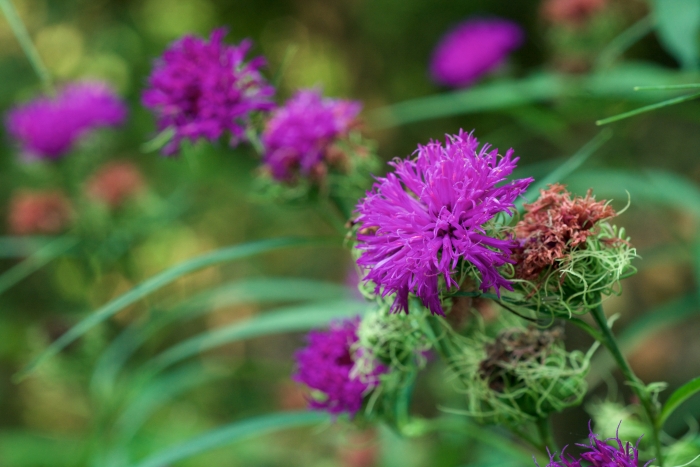Arkansas Ironweed
(Vernonia arkansana)
Arkansas Ironweed (Vernonia arkansana)
/
/

Eric Hunt
CC BY-SA 4.0
Image By:
Eric Hunt
Recorded By:
Copyright:
CC BY-SA 4.0
Copyright Notice:
Photo by: Eric Hunt | License Type: CC BY-SA 4.0 | License URL: https://creativecommons.org/licenses/by-sa/4.0 | Uploader: Eric in SF | Publisher: Wikimedia Commons | Title: Vernonia_arkansana.jpg | Notes: Picture from French Wikipedia; Brede ereprijs (Veronica austriaca subsp. teucrium);{{GFDL}} |

































Estimated Native Range
Summary
Vernonia arkansana, commonly known as Arkansas Ironweed, is a perennial herb native to prairies, meadows, and open woodlands of the central and southern United States. It typically grows to a height of 4–6 feet (1.2–1.8 m) and a width of 3–4 feet (0.91–1.22 m). This plant has a clumping form with stiff, upright stems and lance-shaped leaves. From late summer into early fall, specifically August to September, it produces showy clusters of small, fluffy, pink-purple flowers that are highly attractive to butterflies and other pollinators.
Arkansas Ironweed is valued for its tall, striking presence in the garden, particularly in wildflower meadows and naturalistic plantings. It has received the Royal Horticultural Society’s Award of Garden Merit, indicating its excellence for garden use. While it is adaptable to various soil types, it thrives in moist, well-drained soils and benefits from full sun exposure. It is often used in rain gardens due to its tolerance of wet conditions. Arkansas Ironweed can spread by self-seeding, which should be managed in smaller gardens to prevent unwanted proliferation.CC BY-SA 4.0
Arkansas Ironweed is valued for its tall, striking presence in the garden, particularly in wildflower meadows and naturalistic plantings. It has received the Royal Horticultural Society’s Award of Garden Merit, indicating its excellence for garden use. While it is adaptable to various soil types, it thrives in moist, well-drained soils and benefits from full sun exposure. It is often used in rain gardens due to its tolerance of wet conditions. Arkansas Ironweed can spread by self-seeding, which should be managed in smaller gardens to prevent unwanted proliferation.CC BY-SA 4.0
Plant Description
- Plant Type: Herb
- Height: 4-6 feet
- Width: 3-4 feet
- Growth Rate: Moderate
- Flower Color: Pink, Purple
- Flowering Season: Summer, Fall
- Leaf Retention: Deciduous
Growth Requirements
- Sun: Full Sun
- Water: Medium, High
- Drainage: Slow, Medium
Common Uses
Bee Garden, Bird Garden, Butterfly Garden, Deer Resistant, Hummingbird Garden, Low Maintenance
Natural Habitat
Native to prairies, meadows, and open woodlands of the central and southern United States
Other Names
Common Names: Great Ironweed, Ozark Ironweed, Arkansas-Scheinaster, Prärievernonia
Scientific Names: , Vernonia arkansana, Vernonia crinita, Cacalia arkansana,
GBIF Accepted Name: Vernonia arkansana DC.